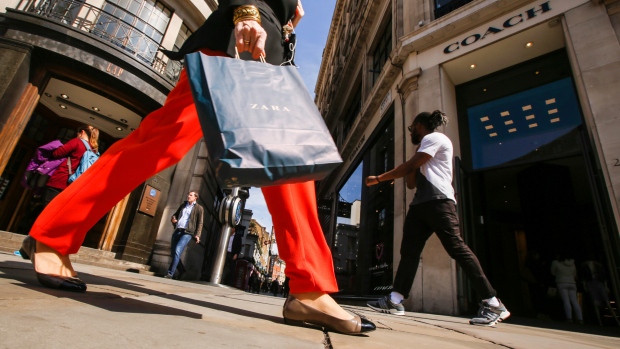May 17, 2018
Zara's new London store greets shoppers with robots, iPads and connected mirrors
, Bloomberg News

At Zara’s new flagship store in London, shoppers can swipe garments along a floor-to-ceiling mirror to see a hologram-style image of what they’d look like as part of a full outfit.
iPad-wielding assistants help customers order their sizes online, so they can pick them up from the store later. Automated collection points let shoppers swing by for purchases they’ve already made from home.
“Customers don’t differentiate between ordering online or in a store,” spokesman Jesus Echevarria Hernandez said. “You need to facilitate that as best as you can.”
The store, which opened Thursday, shows how retailers are increasingly blending online and bricks-and-mortar shopping in a bid to keep up with the might of Amazon.com Inc. Inditex SA, the Spanish company that owns Zara, calls it an example of the technologies it will implement around the world.
Online shopping has been a bright spot for Inditex, with e-commerce sales increasing 41 per cent last year while overall growth slowed. The company has so far outpaced other apparel retailers, such as Hennes & Mauritz AB and Marks & Spencer Group Plc, that were slower to invest in online operations and are scrambling to catch up.
Amazon is moving the other way, building out its physical retail presence. Not only has it acquired grocer Whole Foods Market Inc., it has opened Amazon Go convenience stores, which use artificial intelligence and video cameras in lieu of checkouts, in several U.S. cities. Walmart Inc., meanwhile, has installed pickup “towers,” which let shoppers retrieve online orders, in hundreds of locations.
SELF-SERVICE CHECKOUTS
At the new, 4,500 square-meter (48,000 square-feet) Zara in London’s Stratford section, shoppers can collect orders or buy clothes without talking to anyone. Self-service checkouts on both floors let customers pay with their mobile phones or credit cards.
The order collection points, which can store as many as 2,400 parcels between them at a given time, are fully automated. After the customer swipes a receipt on a sensor at the front, a robotic arm behind the scenes retrieves the appropriate box and deposits it in to a hatch for to be retrieved.
Every garment is fitted with a radio-frequency identification tag. The technology lets Zara check a store’s inventory in two hours, a process that used to take about three days, Hernandez said.
The location, a Westfield Corp. shopping center, still draws hordes of shoppers despite the broader malaise in the U.K. retail industry. It was chosen as a testing ground for the new technology because it was already a destination of choice for Zara’s click-and-collect customers.
Online shopping accounts for 22 per cent of non-food retail sales in the U.K., according to the British Retail Consortium. That shift has accelerated, meaning Zara and many other retailers are faced with a stark choice: use your stores more creatively or close them.
“We still want customers to interact with our physical stores,” Hernandez said.





